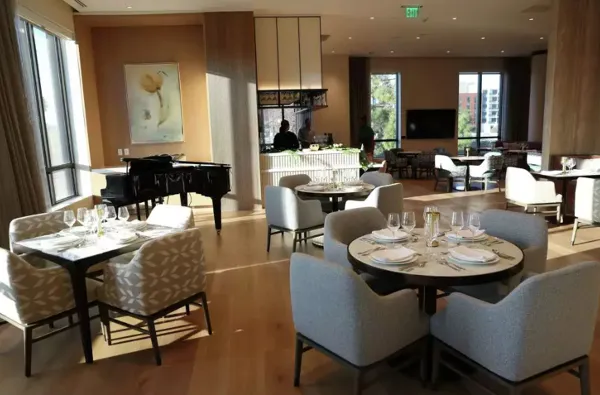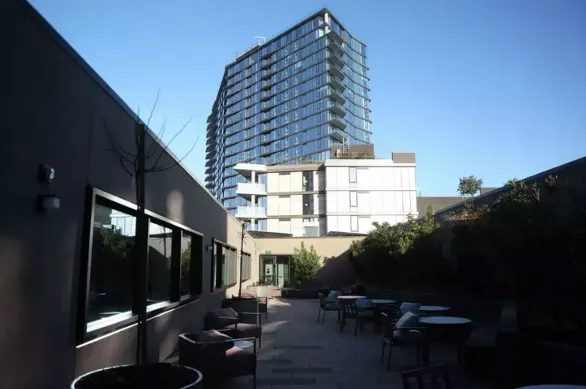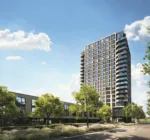The heartbeat of one of the Bay Area’s fastest-growing neighborhoods is Clara Junction, a 15,000 square foot restaurant and beer garden occupying a former Carl’s Jr. in the shadow of Levi’s Stadium in Santa Clara.
There, along with music and cornhole, chipotle chicken nachos and Carolina pulled pork, a group of housing developers are busy selling a concept new to suburban Silicon Valley: The Clara District, a transit-oriented neighborhood that will be more dense than most parts of San Francisco.
With four large, new apartment communities totaling 1,358 units opening in the next few months Clara Junction hasn’t just become a de facto leasing center for a new neighborhood better known for Brock Purdy touchdowns than residences; it’s the gateway to a small corner of Santa Clara that has produced more housing than has been completed in all of San Francisco this year.
“We basically put lipstick on a Carl’s Jr.,” said Steve Edwards, a vice president for the developer Ensemble, which, in January, will open the 311-unit AVE Santa Clara. “Our leasing agents are sitting in the beer garden. Everybody meets there and then walks over to the building. The tenants see there are people here. There is food and wine and beer. There is something going on.”
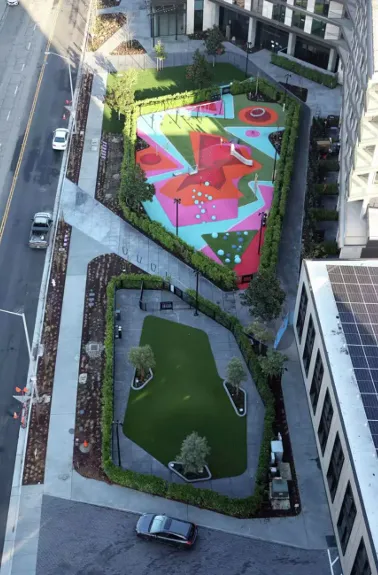
A 45-acre former light industrial park just north of the 49ers’ home, the vision for the Clara District — originally called the East Tasmin plan — includes 4,500 units of housing, although it’s already being amended to add another 1,500 apartments. In addition to the 1,358 units nearing completion, a 196-unit affordable development has already opened at nearby 2233 Calle Del Mundo.
Santa Clara, home to tech companies like Nvidia, Intel and Applied Materials, has more than two jobs for every housing unit. Average home price there hovers around $2 million and rents average $3,300 a month.
The Tasmin East plan was a collaboration between city planners and a group of developers who jockeyed to buy up sites around the Lick Mill train station and Levi’s stadium.
“A lot of jobs are in North Santa Clara so it was intended to start providing some housing options,” said Reena Brilliot, Santa Clara’s Director of Economic Development and Sustainability.
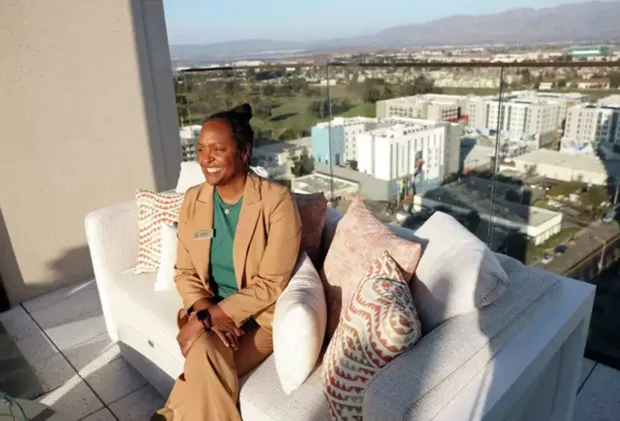
When the Tasmin East specific plan was passed in 2018, interest was high.
“We don’t need to sell Santa Clara as a good place for housing,” said Brilliot. “We had developers lining up — I had to get contract staff to work with us to process the number of planning applications we got submitted that year.”
The first wave of construction was about to start when the pandemic struck. The developers all paused for about 18 months; then, in 2021, there was a window where the suburban real estate market was soaring and interest rates had not spiked, according to Nick Witte, vice president of development for Related California.
“Most of us were able to secure financing and get started in the first half of 2022, right before we saw the big climb in interest rates and capital shut off for new ground up
development,” Witte said.
While the biggest developers in the neighborhood will be competing for tenants — Related has approvals for 1,600 units and Ensemble for 1,250 — Clara District property owners met twice a month with city planners to make sure their efforts were not redundant. They collaborated on a variety of public parks, paseos, bike lanes and retail. The district will include about 100,000 square feet of restaurants and shops.
“It’s pretty unique in the suburbs outside of San Francisco to see this kind of concentrated density that is not in an existing downtown,” Witte said.
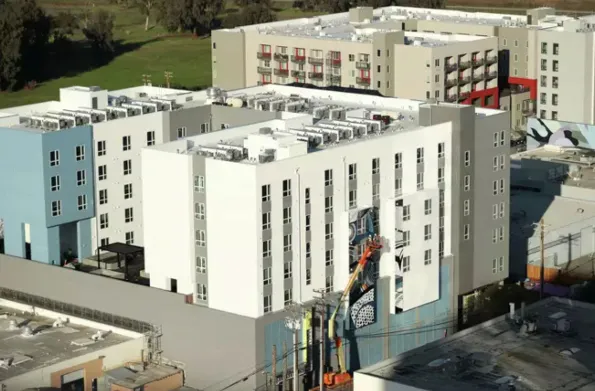
Both Witte and Edwards said that the collaboration turned into a collective vision for a new downtown in North Santa Clara. That is a departure from many plans where city bureaucrats and consultants pile on fees and obligations — leading to the so-called “christmas tree effect” where so many costs are added on that the housing becomes infeasible.
“We were able to exchange ideas about what the city wanted but also what the developers needed to make it feasible,” Witte said. “The input from developers early on was pretty unique.”
Today, the district is buzzing with safety-vests and hard hats.There is the 509-unit Clara and the 176 unit luxury senior project Ellore, both by Related California. Summerhill is wrapping up the 347-unit Tasmin East, while Ensemble plans to welcome its first residents in January to AVE Santa Clara. USA Properties Fund is underway on a 150-unit affordable development.
The tallest of the next wave of buildings to open is Ellore, Related’s 20-story senior building. The tower, which overlooks the San Francisco 49ers’ practice fields, is being operated by Oakmont Management Group, which promises “a blend of sophistication, innovation and sustainability to fit the Silicon Valley lifestyle.”
And residents will be paying a small fortune to live there: The cheapest studios go for $7,000 a month while the two-bedrooms start at $16,000. There are different options depending on residents’ needs — independent living, assisted living and memory care; outdoor dining terrace; cocktail lounge; library; concierge physician’s office; and an outdoor saltwater plunge pool on the 20th floor overlooking the Diablo Mountains.
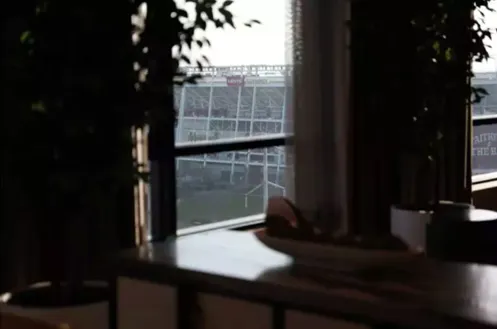
Ellore will open in the spring, and has about 30 depositors, according to executive director Lola Bullock. Staff has been doing luncheons around the Bay Area at country clubs and restaurants for perspective tenants — all 11 have been sold out with about 30 at each event.
“Many of our depositors have been watching the community rise from the ground up, and waiting for it to open,” Bullock said. “It’s Google, Apple, Nvidia, Stanford. It’s a lot of engineers and physicians that live in Silicon Valley that have been watching the building come up and waiting for it to open.”
She said 90% of the residents committing to the building are engineers and physicians. “They are living in sprawling mansions right now — just the two of them — and looking for an
opportunity to live in luxury with high-quality programming,” she said. “We are seeing a rush for the two-bedroom penthouses.”
Meanwhile, the Clara Junction is a welcome station for pioneering residents and a pre- and post game hangout for Niners fans. But it won’t last forever: Eventually the old Carl’s Jr. will be razed to make way for development. “We wanted to find a use that would activate the district and be a neighborhood amenity but wasn’t so expensive that we couldn’t tear it down in five or 10 years in order to build more housing,” Edwards said.
Source: SF Chronicle
